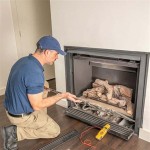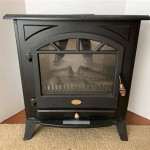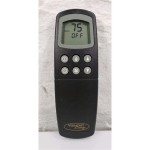```html
Fireplace Mantel Shelf Designs: A Comprehensive Guide
The fireplace mantel shelf serves as a focal point within a living space, offering both aesthetic appeal and functional utility. Its design can significantly impact the overall style of a room, ranging from rustic charm to contemporary minimalism. Selecting the appropriate mantel shelf design involves considering various factors, including the architectural style of the home, the size and shape of the fireplace, and personal preferences. This article provides a comprehensive overview of fireplace mantel shelf designs, exploring different styles, materials, and considerations for installation and maintenance.
Understanding Architectural Styles and Mantel Shelf Compatibility
The design of a fireplace mantel shelf should complement the existing architectural style of the home. A traditional home, for instance, might benefit from a mantel shelf featuring ornate carvings, while a modern home would typically call for a simpler, more streamlined design. Identifying the dominant architectural style is the first crucial step in selecting a compatible mantel shelf.
For a Victorian-era home, a mantel shelf made from dark wood, such as mahogany or walnut, and embellished with intricate carvings and moldings would be a fitting choice. These mantels often feature elaborate details, including corbels, fluted pilasters, and decorative friezes. The scale of the mantel should be proportionate to the size of the fireplace and the room, creating a sense of grandeur and elegance.
In contrast, a mid-century modern home typically favors clean lines and minimalist aesthetics. A mantel shelf made from light-colored wood, such as maple or birch, with a simple rectangular shape would be more appropriate. Avoiding excessive ornamentation and focusing on functionality are key principles in mid-century modern design. The mantel shelf might be integrated seamlessly into the surrounding wall, creating a floating effect.
For a rustic or farmhouse-style home, a mantel shelf made from reclaimed wood is an excellent option. The natural imperfections and character of the wood, such as knots and grain variations, add to the charm and authenticity of the space. A rough-hewn beam or a mantel shelf constructed from weathered barn wood can create a cozy and inviting atmosphere. The use of metal accents, such as wrought iron brackets, can further enhance the rustic aesthetic.
Contemporary homes often feature sleek and minimalist designs, and the mantel shelf should reflect this aesthetic. Materials such as concrete, glass, or metal are popular choices, and the design should be simple and uncluttered. A floating mantel shelf, mounted directly to the wall without visible supports, is a common feature in contemporary homes. The focus is on creating a clean and modern look, with minimal distractions.
Material Selection and Performance Characteristics
The choice of material for a fireplace mantel shelf has a significant impact on its appearance, durability, and maintenance requirements. Different materials offer varying aesthetic qualities and performance characteristics, and the selection should be based on both personal preferences and practical considerations.
Wood is a classic and versatile material for fireplace mantel shelves. It offers a wide range of aesthetic possibilities, from the rich warmth of hardwoods like oak and cherry to the rustic charm of reclaimed wood. Wood mantels can be easily customized with different finishes, stains, and paints to match the surrounding décor. However, wood is also susceptible to heat damage and moisture, so it's important to choose a wood that is resistant to these factors and to properly seal and protect the surface.
Stone is another popular choice for fireplace mantel shelves, offering a timeless and elegant look. Natural stone, such as marble, granite, and limestone, is durable and heat-resistant, making it a suitable material for use near a fireplace. Stone mantels can be carved with intricate designs or left with a smooth, polished finish. However, stone is also a relatively heavy material, so it's important to ensure that the wall can support the weight of the mantel.
Concrete is a modern and industrial-chic material that is gaining popularity for fireplace mantel shelves. It can be cast into various shapes and sizes, and it can be stained or colored to match the surrounding décor. Concrete is also heat-resistant and durable, making it a practical choice for use near a fireplace. However, concrete mantels can be heavy and require specialized installation techniques.
Metal is a sleek and contemporary material that is often used in modern and minimalist designs. Stainless steel, wrought iron, and brushed aluminum are popular choices for metal mantels. Metal mantels can be fabricated into various shapes and sizes, and they can be powder-coated or painted to match the surrounding décor. Metal is also heat-resistant and durable, but it can be susceptible to scratches and dents.
Engineered wood products, such as MDF (medium-density fiberboard) and plywood, are often used as a cost-effective alternative to solid wood. These materials can be veneered with wood or laminate to create a realistic wood look. Engineered wood products are more resistant to warping and cracking than solid wood, but they are generally less durable and heat-resistant. It's important to choose an engineered wood product that is specifically designed for use near a fireplace and to properly seal and protect the surface.
Installation Considerations and Safety Precautions
Proper installation is crucial for the safety and stability of a fireplace mantel shelf. The weight of the mantel, the type of wall construction, and the proximity to the firebox all need to be carefully considered during the installation process. Failure to properly install a mantel shelf can result in structural damage, fire hazards, and personal injury.
Before beginning the installation, it's important to consult with local building codes and regulations. These codes may specify minimum clearances between the mantel shelf and the firebox, as well as requirements for firestopping and ventilation. Obtaining the necessary permits and inspections can help ensure that the installation is safe and compliant with local regulations.
The first step in the installation process is to determine the desired height and location of the mantel shelf. The height of the mantel should be proportionate to the size of the fireplace and the room, and it should be positioned so that it doesn't obstruct the view of the fire. Use a level and a measuring tape to accurately mark the location of the mantel on the wall.
Next, determine the type of wall construction and select the appropriate mounting hardware. For drywall walls, use wall anchors or toggle bolts to securely attach the mantel to the wall studs. For masonry walls, use masonry screws or expansion bolts. Ensure that the mounting hardware is rated to support the weight of the mantel shelf.
If the mantel shelf is made from a heavy material, such as stone or concrete, it may be necessary to install additional support brackets. These brackets can be hidden behind the mantel or left exposed as a decorative feature. The support brackets should be securely attached to the wall studs or masonry using appropriate fasteners.
Once the mantel shelf is securely attached to the wall, check for stability and levelness. Use a level to ensure that the mantel is perfectly horizontal, and make any necessary adjustments. Apply a bead of caulk along the top and sides of the mantel to seal any gaps and prevent drafts.
Finally, clean the mantel shelf and surrounding area to remove any dust or debris. Inspect the installation for any potential hazards, such as loose hardware or exposed wiring. Place decorative items on the mantel shelf to personalize the space and create a focal point.
Regular inspection and maintenance are essential for ensuring the longevity and safety of a fireplace mantel shelf. Clean the mantel regularly to remove dust and soot, and inspect the surface for any cracks or damage. If the mantel is made from wood, apply a protective sealant or varnish to prevent moisture damage. If the mantel is made from stone, clean it with a mild detergent and water.
In conclusion, careful consideration of architectural style, material selection, and installation procedures are crucial for creating a fireplace mantel shelf that is both aesthetically pleasing and functionally sound. Following these guidelines can help homeowners create a focal point that enhances the beauty and value of their homes while ensuring safety and longevity.
```
30 Tips To Diy And Decorate Your Fireplace Mantel Shelf

48 72 Floating Fireplace Shelf With Corbels Country Mantel

30 Mantel Shelf Decorating 101 Ideas Fireplace Mantels

30 Tips To Diy And Decorate Your Fireplace Mantel Shelf

Collection Of Premium Wood Fireplace Mantels Dogberry

30 Mantel And Bookshelf Styling Tips
Fireplace Mantel Surround Shelf Woodmaster Custom Cabinets

Mantel Shelf Archives Inviting Home

18 Unique And Stylish Mantel Shelf Ideas Without A Fireplace

Rustic Mantel 6h X 8d Fireplace Mantle Shelf Reclaim Wood Barn Reclaimed Beam Decor
Related Posts








